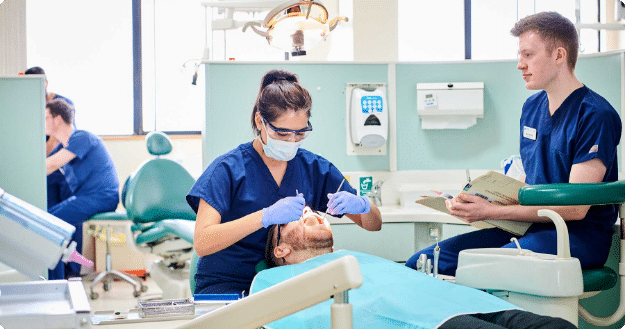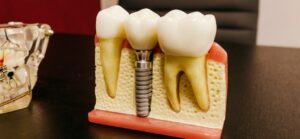
Can braces be affordable? Chicago dentist, Dr. Theodore Siegel urges you to consider the big benefits of straight teeth, and potential costs associated with crooked teeth, when making this determination. He explains how orthodontics can help to prevent dental problems that may cause much more expense (and discomfort) in time.
More than just moving teeth
Q . How do braces move teeth?
A : Most people think teeth are simply pushed and pulled into alignment with braces, but orthodontics is a precise science that manipulates the concept of bone remodeling. Each tooth has a periodontal ligament with thousands of fibers that anchor the tooth to the jawbone and help to absorb shock from chewing. When consistent pressure is applied to a tooth, the periodontal ligament is compressed against the jawbone on one side and stretched on the other side. This alters blood flow and activates a chain of biochemical changes in bone tissue. Cells called osteoblasts produce new bone on one side, while osteoclasts resorb bone on the compression side. This process of remodeling allows the tooth to move and settle into its new position.
Q . Does it require aggressive force to move teeth with orthodontics?
A : An experienced dentist accomplishes this movement with light, even force that minimizes risk of root damage or gum recession. He considers occlusion – how the upper and lower arches of teeth come together when you close your mouth – as well as attractive alignment.
Braces as a preventive measure
You may initially consider orthodontics because you are unhappy with the appearance of crooked teeth or want a solution to fix gaps between teeth. The benefits of straight teeth, though, go far beyond appearance.
Q . Can braces reduce risk of tooth decay?
A : Spaces between teeth are notorious for capturing bits of food. Closing those gaps with orthodontic treatment makes it easier to keep teeth clean with brushing and flossing. It reduces risk of tooth decay and could end up saving you the expense of many fillings or crowns and the missed work time required for those appointments.
Q . How does orthodontic treatment contribute to gum health?
A : Crowded, overlapping teeth and those that are twisted are a recipe for gum disease. These conditions create an ideal environment for harmful oral bacteria to flourish. They produce acidic secretions that irritate gum tissue. Without prompt treatment, gingivitis progresses to periodontal disease. Nonsurgical and surgical techniques may necessary to get the disease under control and preserve teeth and facial bone.
Q . Do crooked teeth wear faster?
A : Misaligned teeth cause unusual stress on opposing teeth. You may find yourself with worn down teeth, fractures, or chips that require restorative procedures such as dental bonding, crowns, or root canal therapy.
Q . Can orthodontics improve TMJ issues?
A : Bite problems inflame nerves in the temporomandibular joints. Countless men, women, and children suffer migraines or headaches, jaw and facial pain, earaches, and neck, shoulder, and back discomfort from malocclusion. In many cases, proper orthodontic care restores balance to the bite and relieves these symptoms . . . without drugs.
Q . Are veneers an alternative to braces?
A : They can be. Dental veneers are thin shells of porcelain designed to mask a variety of flaws in “smile teeth” – the four, six, or eight that show most readily. Dental veneers are a beautiful way to cover chips, cracks, natural pits or bumps, stubborn discoloration, or irregularities in the shape and size of teeth.
Q . Why are veneers sometimes referred to as “instant orthodontics?”
A : Veneers can also close small gaps between teeth, and make teeth look straight and uniform. This treatment takes only about two visits over several weeks. It is important to know that veneers improve aesthetics only. They do not change actual alignment of teeth or alter the bite. Dr. Siegel generally recommends veneers only for minor misalignment.
Q . Can braces help you feel great about the appearance of your smile, and possibly prevent future dental issues?
A : After a comprehensive examination and x-rays of your mouth, Dr. Siegel will discuss your treatment options in detail, including Invisalign clear aligners. It is important to have realistic expectations for any dental treatment, and to understand the commitment required for straightening.
Call Big Smile Dental to find out how affordable braces in Chicago can be. We’ll be happy to work with you on a payment option that fits your budget (including low- or no interest financing with credit approval) while you get a straight, healthy, gorgeous smile. The number is 773-772-8400.





